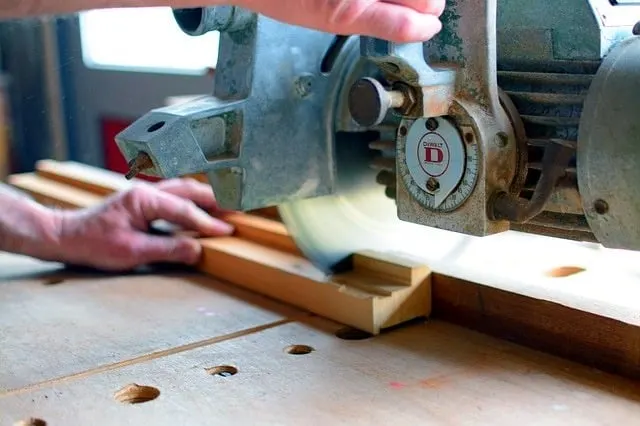
Dear readers! Woodworking isn’t just a craft. It’s an art form that invites individuals into a world where creativity meets skill. As a passionate woodworker myself, I’ve discovered that this ancient craft is a gateway to unleashing creativity. These are the techniques that can transform a simple block of wood into a masterpiece. In this blog, I’ll dig into the fundamentals, basic techniques, and share some amazing personal tips for beginners who want to start their woodworking journey. So let’s get started with me.
Understand Woodworking First:
So at its core, woodworking is the art of creating objects from wood. It’s all about crafting furniture, carving sculptures, constructing cabinets, and building intricate structures. Woodworking encompasses a diverse range of projects according to our interests. The craft demands a blend of precision, creativity, and a deep understanding of wood and its properties.
Why is this a Passion of so Many of Us?
Crafting, especially woodworking, holds a reflective place in our hearts for a multitude of reasons. When the art of crafting with wood woven its way into our lives, it gives a personal sanctuary where creativity and skill interlink. The attraction of crafting lies in the sheer joy of creation. For you, as a craftsman, the journey from raw materials to a finished, handcrafted piece instills a supreme sense of accomplishment. The process involves an intimate dance with the wood, sculpting it into something that transcends the ordinary. This can be a testament to your imagination and skill.
Beyond the tangible outcome, woodworking is our refuge, a haven where time slows down and the outside world fades away. Each completed project represents not just a physical creation but a journey of growth and learning. Ultimately, the love for crafting stems from the deep-rooted satisfaction it brings. The act of crafting is not just a pastime. It’s a passion that fosters creativity and leaves an everlasting mark on your soul!
The Fundamentals of Woodworking:
Wood and its Characteristics:
First things first. Understanding different wood types is fundamental. Woods vary in grain, texture, hardness, and workability. Softwoods like pine are easier to work with, while hardwoods like oak are durable but may require more effort. Each wood type has unique characteristics. This make it essential to select the right wood for your project.
Essential Tools:
Secondly, right tools are crucial. Basic tools like saws, chisels, hammers, measuring tools, and power tools such as drills and sanders form the foundation of any woodworking project. As you progress, consider adding more specialized tools to your collection.
Safety Measures:
You need to prioritize safety at all times. Wear safety goggles, hear protection, and use push sticks for table saws are just a few precautions to prevent accidents. How to use tools safely is as important as mastering the woodworking techniques.
Basic Techniques in Woodworking:
Measurement and Marking:
Accurate measurements are the backbone of successful woodworking. You need to learn how to measure precisely and mark the wood properly ensures your project fits together seamlessly.
Cutting and Shaping:
From sawing to shaping, mastering cutting techniques is crucial. A person should know how to cut along the grain, make bevel cuts, and create intricate shapes is essential for diverse woodworking projects.
Joinery:
Joinery techniques like dovetail joints, mortise and tenon joints, and lap joints are the essence to create sturdy and visually appealing woodwork. Practice and patience are key to mastering these techniques.
Sanding and Finishing:
Sanding smoothes the wood and prepares it for finishing. Applying stains, paints, varnishes, or oils enhances the wood’s natural beauty. Lastly, experiment with different finishes will help you find your signature touch and here you go!
Beginner Tips for Woodworking:
Start Small:
You need to begin with simple projects like a small shelf or a basic stool to grasp foundational techniques before moving on to complex creations.
Learn from Mistakes:
Remember, mistakes are part of the learning process. We should embrace them to understand why they happened, and use them as lessons for improvement.
Patience is Key:
I always stress that woodworking requires patience. Take your time with each step, as rushing can lead to errors and compromise the quality of your work.
Continuous Learning:
Without any doubt, woodworking is an ever-evolving craft. You need to hug resources like books, online tutorials, workshops, and the expertise of seasoned woodworkers to expand your knowledge for the best.
Get on This Crafting Journey with The Habit of Woodworking:
Woodworking isn’t just a hobby. It’s a way of life for several. The patience, precision, and satisfaction to create something tangible with your hands are matchless. Acceptance in this craft raises a sense of accomplishment that extends beyond the finished product. This is a journey filled with learning, challenges, and the joy of creation. If you are a beginner, start with the fundamentals, master techniques and follow these above tips. This will set you on the path to become a skillful woodworker. Lastly, The Habit of Woodworking not only nurtures creativity but also instills patience and perseverance, making it a deeply rewarding pursuit. So, grab your tools, pick up that piece of wood, and start your woodworking journey today!
- Sagittarius Man & Gemini Woman Love and Sex Compatibility - January 31, 2024
- Taurus Ascendant Rising Personality Traits in Men (Guide) - January 31, 2024
- How to Seduce and Attract a Sagittarius Man (Seduction Tips) - January 31, 2024
